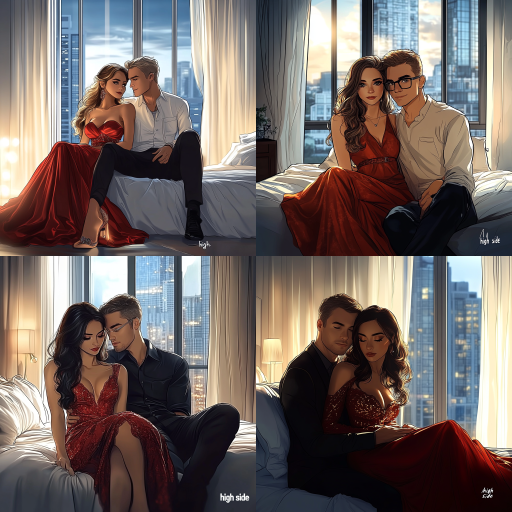Explore the Best AI Image Gallery

Painting with Pixels: The Impact and Future of AI Image Creation Tools
In recent years, artificial intelligence (AI) has seeped into almost every facet of our lives, and the creative industry is no exception. AI image creation tools have emerged as powerful allies for artists, designers, and marketers, providing an unprecedented level of versatility and efficiency. These tools harness machine learning algorithms to generate stunning visuals, revolutionizing how art, advertising, and content creation are approached.
The Rise of AI Image Creation Tools
From DALL-E to Midjourney, various AI-powered platforms are capable of generating images that range from hyper-realistic to surreal in style. Unlike traditional methods that require hours of painstaking effort, these AI tools can produce compelling visuals in mere minutes, enabling professionals and amateurs alike to push the boundaries of creativity. The implications for the creative industry are profound:
- Efficiency: Creative professionals can create visual content faster than ever before. This efficiency allows for rapid prototyping and iteration, which can streamline workflows across multiple industries.
- Accessibility: With user-friendly interfaces, individuals without technical art skills can generate high-quality images, democratizing access to creative tools.
- Collaboration: Artists can partner with AI systems to explore new styles and genres, leading to innovative creations that blend human intuition and machine efficiency.
Potential Uses of AI Image Creation Tools
The potential applications for AI-generated images are vast and varied, impacting multiple sectors:
- Marketing and Advertising: Brands are utilizing AI-generated imagery for advertising campaigns to produce unique and eye-catching visuals that stand out in a crowded marketplace.
- Film and Animation: AI tools can accelerate concept art and storyboarding processes, enabling filmmakers to visualize scripts in innovative ways.
- Videogames: Developers are using AI to generate in-game assets, environments, and characters, allowing for rich, immersive experiences without the extensive resource commitment.
- Fashion and Design: Designers can quickly create virtual fashion items and prototypes, enabling them to experiment with colors and patterns before moving into production.
Ethical Considerations
As we embrace AI in the creative arts, ethical considerations surrounding its use cannot be overlooked. Some of the challenges include:
- Intellectual Property: The question of ownership over AI-generated art is complex. If an AI generates an image based on millions of pre-existing artworks, who holds the copyright?
- Job Displacement: While AI tools augment creativity, concerns are rising about their potential to displace artists and creative professionals.
- Authenticity: The rising proliferation of AI-generated images raises questions about the value of traditional art, authenticity, and whether AI can truly understand human creativity.
Future Trends
Looking ahead, we can anticipate several trends in the realm of AI image creation:
- Augmented Creativity: The emphasis will shift towards using AI as a supplementary tool that enhances human creativity rather than replacing it. Artists will likely find new methods to collaborate with these technologies.
- Customizable AI: Expect to see more customizable AI tools that allow users to train algorithms based on personal preferences, ensuring unique outputs that better align with individual artistic visions.
- Cross-Disciplinary Collaboration: The blending of AI with other technologies such as VR and AR could lead to interactive art forms that engage audiences in entirely new ways.
- Stricter Regulations: As issues surrounding intellectual property and ethics gain visibility, the industry may see the introduction of guidelines governing the use of AI in creative processes.
In conclusion, AI image creation tools are transforming the landscape of the creative industry. As we navigate the opportunities and challenges that these technologies present, it's essential to champion ethical practices and enhance rather than replace the artistic process. The future of AI in creativity holds promise, and as these tools evolve, they will likely redefine how art is imagined and created.
](https://images.ai-img.art/thumbnails/150/51c93500396faff4e7fa8b42bc68033067b16b2230e3496e95c482a581ff0fe9.webp)



](https://images.ai-img.art/thumbnails/150/157712d76865d557120f9baf988de3d0525225295a2789c89bf2c4a5a96a03d1.webp)




![**Representation: A dog acting as a private tutor to a child. The dog holds a ruler in its paw and stands at the blackboard to explain a dog diagram to the child. Graphic style: Line drawing, cartoon style, influenced by Franco-Belgian comics, thick black lines, simplified design, vector, black and white only, in the style of Keith Haring or the French comic strip "Alinéa". [IMPORTANT]: A single continuous line extending from one side of the image to the other, minimalist, strong outlines, line drawing, without lifting the hand, ultra-simplified, no shading, entirely white image, drawing created in the center of a sheet of paper. --ar 16:5** - Variations (Strong) by <@627984126871470085> (fast)](https://images.ai-img.art/thumbnails/150/f4e034998ccd869d8a061fd12017514fcd92210eb33d4222dc9b54716223f4dd.webp)



![**Representation: A teenager smiling while thinking about a friendly dog, a comic-style thought bubble with a friendly dog inside. Graphic style: Line drawing, cartoon style, influenced by Franco-Belgian comics, thick black lines, simplified design, vector, black and white only, in the style of Keith Haring or the French comic strip "Alinéa". [IMPORTANT]: A single continuous line extending from one side of the image to the other, minimalist, strong outlines, line drawing, without lifting the hand, ultra-simplified, no shading, entirely white image, drawing created in the center of a sheet of paper. --ar 16:5** - <@627984126871470085> (fast)](https://images.ai-img.art/thumbnails/150/6fc850f638e3dee0c4b121acecad2c8419e02bdeac7f871d625f1003c1c3abe1.webp)












![**Representation: A dog acting as a private tutor to a child. The dog holds a ruler in its paw and stands at the blackboard to explain a dog diagram to the child. Graphic style: Line drawing, cartoon style, influenced by Franco-Belgian comics, thick black lines, simplified design, vector, black and white only, in the style of Keith Haring or the French comic strip "Alinéa". [IMPORTANT]: A single continuous line extending from one side of the image to the other, minimalist, strong outlines, line drawing, without lifting the hand, ultra-simplified, no shading, entirely white image, drawing created in the center of a sheet of paper. --ar 16:5** - <@627984126871470085> (fast)](https://images.ai-img.art/thumbnails/150/7a854648a81e51241dcca8d24dd6e3bfcf07ad1df51baf401c9b729f4cf411fa.webp)











](https://images.ai-img.art/thumbnails/150/9d51c5e673b4f2068b7b01abc35425a06f173b76303adf9ad29ca14302c25b18.webp)





